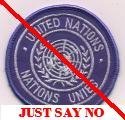Democracy at the Doorstep of Minsk & Moscow ?
The Kremlin has made it known publicly that it is not keen at all with these meetings. However, the Kremlin really ought to be far more concerned with an "unknown, anonymous student alliance that has successfully overthrown autocrats in four ex-Soviet states", (that’s four successful democratic revolutions inside the former Soviet Empire in 4 ½ years, three in the last 18 months) and now has Belarus and Russia itself in its sights. While theses student groups have names, the "alliance itself has no name and no leader".
According to Dr. Jack Wheeler, here's the historical timeline of these four successful deomcratic revolutions:
Otpor in Serbia
In October 1998, a group of Serbian university students formed a democracy movement dedicated to ending the dictatorship of Slobodan Milosevic. The movement was called Otpor! – Resistance! – and advocated relentless, well-organized, yet nonviolent street demonstrations and protests. Such a method – known as “Triple U” for Uncontrollable Urban Unrest – had been used to overthrow the Soviet colonial regimes of Eastern Europe in 1989.
Otpor was distinct in two ways. It was amorphous, with no charismatic leader attracting publicity and whose elimination would disband it. It was extremely street-smart clever. Otpor sought in particular, for example, to appeal to the police, forswearing violence, telling policemen they were fellow victims of an oppressive regime, with signs at protests saying: “Some victims are in blue jeans, others in blue uniforms.”
By mid-1999, persevering against gangs of Milosevic’s thugs, Otpor had grown from a few hundred students to over 4,000 members; by mid-2000 to over 70,000. In the September 24, 2000 presidential election, opposition candidate Vojislav Kostunica defeated Milosevic. When Milosevic attempted to force a second round of the election, Otpor staged a series of mass rallies in Belgrade chanting the slogan gotov je – “He’s finished.” On October 5, Otpor students and Kostunica supporters stormed the parliament and occupied Serbian state television. Two days later Milosevic conceded electoral defeat, and Kostunica was inaugurated. Otpor’s democratic revolution had succeeded.
Kmara in GeorgiaThat’s four successful democratic revolutions and with each revolution, they get better at it.
In the spring of 2003, a group of Georgian university students went to Belgrade for a meeting with Otpor leaders. They returned to Tbilisi and formed a democratic resistance movement called Kmara! – Enough! – with the goal of removing the corrupt dictatorial regime of Eduard Shevardnadze.
Grafitti appeared all over Georgian cities simply proclaiming Kmara! Young Kmara activists cleaned rubbish from the streets, organized concerts, collected money for charity, protested against police violence and ran TV ads condemning the government. Whatever the action, the message stayed the same: the government has failed to keep its promises and it was time for the people to hold it to account. Otpor leaders made numerous trips to Tbilisi guiding Kmara activists over the next several months.
When international observers denounced the parliamentary elections of November 2, 2003 as grossly rigged, Kmara was able to put tens of thousands of people on the street in central Tbilisi and in every major city in Georgia, all carrying or wearing roses. The “Rose Revolution” peaked on November 22, when Kmara-led protestors seized the parliament building in Tbilisi, interrupting a speech of Shevardnadze, forcing him to escape with his bodyguards.
When Shevardnadze declared a state of emergency and began to mobilize troops and police near his residence, the elite military units refused to support the government. He resigned the next day, paving the way for the presidential election of Mikhail Saakashvili on January 4, 2004 and honest parliamentary elections on March 28. Kmara’s democratic revolution, trained by Otpor, had succeeded.
Pora in Ukraine
In early April 2004, 18 Ukrainian university students traveled to Novi Sad, a city in northern Serbia, to meet with Otpor leaders. They returned to Kiev to announce the formation of Pora! – It’s Time! – a youth movement espousing democracy in place of Ukraine’s ex-Soviet apparatchik authoritarian regime, to be achieved through nonviolent resistance.
Through the use of pranks and slogans – posters of a giant boot crushing a cockroach, spray-painted graffiti and stickers saying “Time to Arise!” – and sophisticated communications techniques with websites, cell phones, and text messaging, Pora’s membership and popularity exploded. All through this, Otpor and Kmara activists were visiting Kiev frequently providing guidance.
When the Ukrainian KGB, the SBU, attempted to assassinate opposition presidential candidate Viktor Yushchenko with dioxin poisoning (at the direction of Gleb Pavlovskiy, a top advisor to Russian President Putin) in early September 2004, Pora organized enormous street rallies in his support. The two rounds of presidential elections on October 31 and November 21, giving victory to government candidate Viktor Yanukovych, were declared blatantly fraudulent by international observers.
Pora organized rallies at Maidan (Independence) Square in Kiev attended by hundreds of thousands of Ukrainians all wearing orange ribbons. When Nazi skinheads and government secret police were sent in as agents provocateur to incite the crowd to violence, they were ignored. Non-stop rock concerts – literally rock-around-the-clock – were performed.
After 13 consecutive days of these “Orange Revolution” demonstrations, the Ukrainian Supreme Court declared the election results void and a new election held – which it was on December 26 with Yushchenko winning in a landslide. Viktor Yushchenko was inaugurated President of Ukraine on January 23, 2005. Pora’s democratic revolution, trained by Otpor and Kmara, had succeeded.
KelKel in Kyrgyzstan
Shortly after the December 26, 2004 election in Ukraine, Pora leaders in Kiev were contacted by a group of student democracy activists at Bishkek University in the Central Asian country of Kyrgyzstan. Their country’s leader, Askar Akayev, had turned into an autocrat and they wanted Pora’s help.
Within days, Pora leaders were in Bishkek training the young Kyrgyz. On January 11, when Roza Otunbayeva, leader of the Ata-Jurt (Fatherland) opposition party was not allowed to register as a candidate for the upcoming parliamentary elections, the formation of KelKel! (Revival!) was announced. Holding a protest meeting, KelKel members passed out lemons to the protestors “to help you stay healthy in the cold” (it is bitterly cold there in January).
KelKel catalyzed a protest movement that spread far more quickly than anyone anticipated. As the results of the first round of parliamentary voting on February 27 came in, protests throughout the country began erupting. KelKel activists focused the protests’ demand that the only solution to the corrupt rule of the Akayev family would be for Akayev to resign.
Shortly after the second round results were announced on March 13, the protests grew dramatically. On March 18, thousands of demonstrators occupied the governor’s office in the city of Jalal-Abad and various government buildings in Osh. On March 20, police unsuccessfully attempted to recapture the buildings. By March 21, demonstrators had seized all of Osh, including the police station, television station, and the airport.
On March 24, the protests reached the capital of Bishkek. Tens of thousands of protestors gathered in front of the main government building housing parliament and the presidential offices. When police and government thugs began beating KelKel students in the front of the demonstration, the outraged demonstrators swept aside the police and thugs, stormed into the building and seized it. President Akayev and his family escaped via helicopter to neighboring Kazakhstan.
That afternoon in Tbilisi, Georgia, viewers of the Rustavi-2 television channel saw a member of their parliament, Givi Targamadze, broadcasting live from the demonstrator-captured television station in Bishkek, giving an eyewitness account of the overthrow of the Kyrgyz government.
Targamadze had been one of Kmara’s main leaders, and he, together with two other former Kmara leaders turned elected Georgia Parliament members, had been in Kyrgyzstan for a month in cooperation with Pora leaders, advising KelKel. The Rustavi-2 announcer closed the broadcast by noting, “In the last year and a half, this is the third revolution for Givi Targamadze, after Tbilisi and Kiev.”
While far more accelerated than imagined, and thus far more violent and chaotic than desired, KelKel’s democratic revolution, trained by Pora and Kmara, had succeeded.
One technique they’ve mastered is the use of Democracy Babes. When they bat their baby blues or browns at the police and hand them a rose or orange scarf, it’s hard for the police to obey orders to beat them up or shoot them.
Europe’s “Last Dictatorship” of Belarus is next in line. Pora has helped students in Minsk, the Belarus capital, set up a sister group called, somewhat mysteriously, Zubr, Belarusian for Buffalo.Pora is not the only one that is helping ZUBR. California Students Hike to Raise funds for ZUBR.
The Zubr's have their own Zubr website in English.
Dr. Wheeler then goes on to write:
Then comes Putin’s Russia. Sure enough, there’s already a student organization at Moscow University called Porá (same word in both Ukrainian and Russian, with emphasis on the first syllable in the former, the second in the latter). They’re calling for Putin’s impeachment and the creation of a true free market democracy in Russia.
So perhaps there is a reason why Putin and the Kremlin oligarchs are nervous over Bush’s meetings next week in Riga, Latvia and Tbilisi, Georgia. The last time Bush and Putin met, in Bratislava, Slovakia on February 24, 2005, the very next day Bush had a private meeting with Vladyslav Kaskiv and other leaders of Pora.The good Dr. theorizes that "time is closing in on the autocrats of Minsk and Moscow." And, he could very well be right.
Kaskiv was told by Bush: “Freedom cannot stop at Ukraine’s border.” Ukraine borders Belarus, Moldova, and Russia. Week before last, on April 20, Vladyslav Kaskiv was made Special Advisor to Ukraine President Viktor Yushchenko. He’ll be there in Tbilisi next week, sitting in on Bush’s meeting with Georgian President Saakashvili and his Kmara advisors.



































0 Comments:
Post a Comment
<< Home